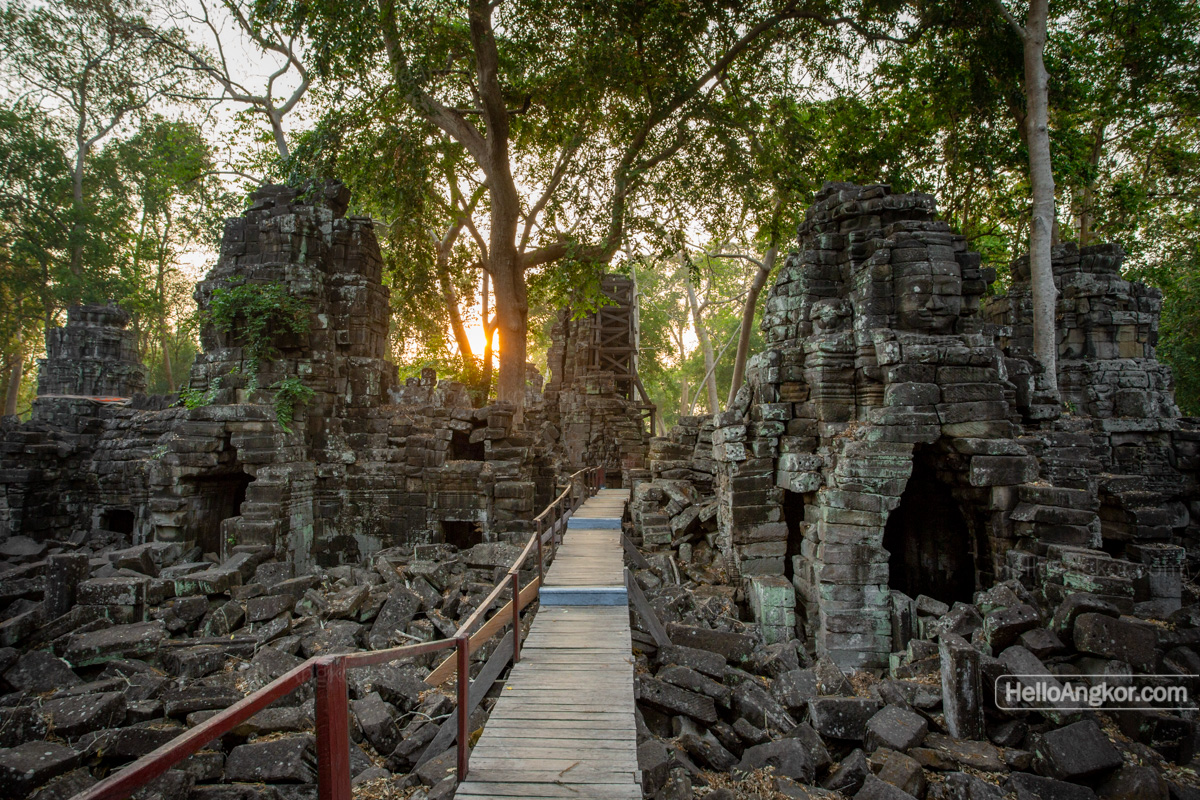Prasat Banteay Chhmar is one of Cambodia’s major ancient temple complexes featuring a massive temple complex covering almost 1sq km enclosed by an outer moat and further surrounded by eight satellite temples along with a grand baray (1700 m x 700 m) on its eastern side. For the satellite temples see Pr. Ta Im, Pr. Yeay Kom, Pr. Ta Phai, Pr. Ta Naem, Pr. Samnang Ta Sok, Pr. Ta Phlang, Pr. Ta Prohm and, Pr. Yeay Chou and the grand baray, its Terrace, and its Mebon (or island temple) as depicted in the map below.
Banteay Chhmar and the surrounding satellite temples are all unique constructions founded in the era of King Jayavarman VII (reign 1180-1220 AD). While it lives in the shadow of other foundations during this era, such as the Bayon, Ta Prohm, and Preah Khan at Angkor, it is very much a grand wonder in its own right.
The site is quite ruinous, although, careful clearance and well-positioned wooden walk bridges enable us to see a large volume of the beautiful ancient art and craftsmanship. Banteay Chhmar Temple features some very beautiful pediments, the spectacular massive smiling faces of the central towers (similar to that of Bayon excepting here you can truly get up close), decorated frieze, ornate pilasters, and the amazing outer gallery wall bas-reliefs.
In recent times, the site has been undergoing extensive restoration works focused on the outer galleries with the western wall and west section of the north wall now mostly complete as of August 2024, revealing even more of the incredible reliefs that adorned the outer gallery.
Navigating Banteay Chhmar
If you are not familiar with Khmer temples, or its your first time, you may like to hire a guide (see the visiting section) who can point out all the highlights along a route for which I will provide a simplistic overview.
Entering the site from the east, one crosses the grand outer moat via a causeway that is lined on either side with a balustrade depicting the naga serpent being pulled by Asura on one side and Devas on the other, akin to those preceding Angkor Thom and Preah Khan. The gopura (entrance pavilion) immediately after the moat is mostly in ruin yet grand depictions of standing garuda can be seen flanking the doorways just like those at seen on the gopura of the sites in Angkor of the same era.
Continuing inside, the grounds are vast and preceding the temple proper and to the north of the causeway is a “Firehouse” which were a common feature placed every 15 km or so along the Royal Road that stretched from Preah Khan of Kampong Svay to Angkor and onwards to Phimai (present day Thailand). According to inscription, 121 firehouse were built, yet, only along this particular section of road.
Temple proper begins with a grand terrace featuring seated lions and naga balustrade which is followed by the outer gallery enclosure wall measuring some 240m x 190m with its entire circumference featuring incredible bas-reliefs of religious iconography and detailed depictions of what are believed to be major events during the era.

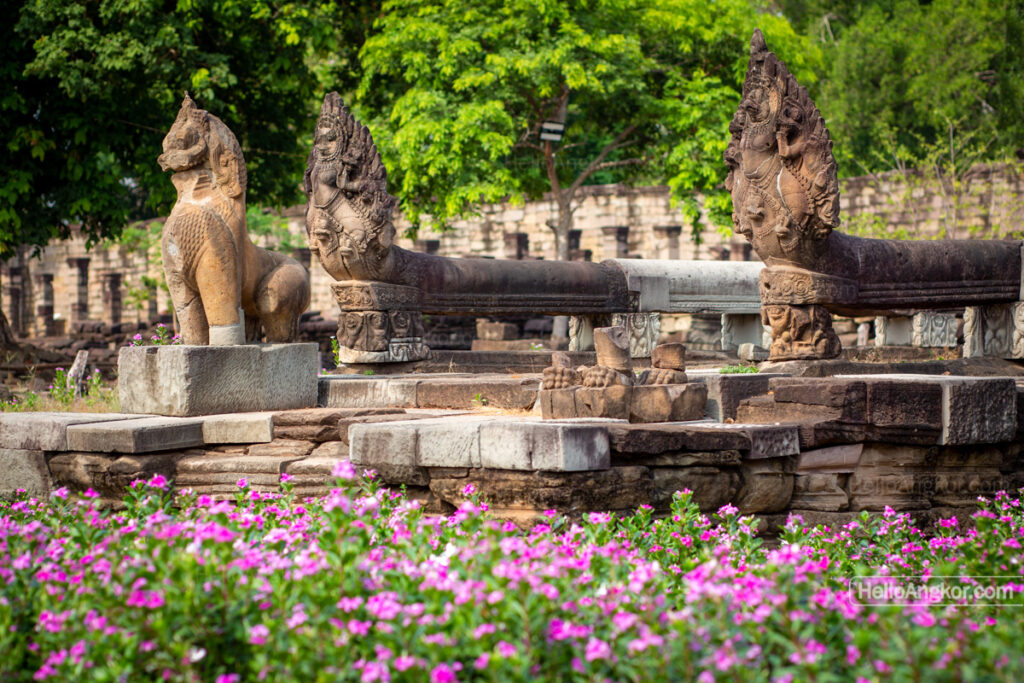

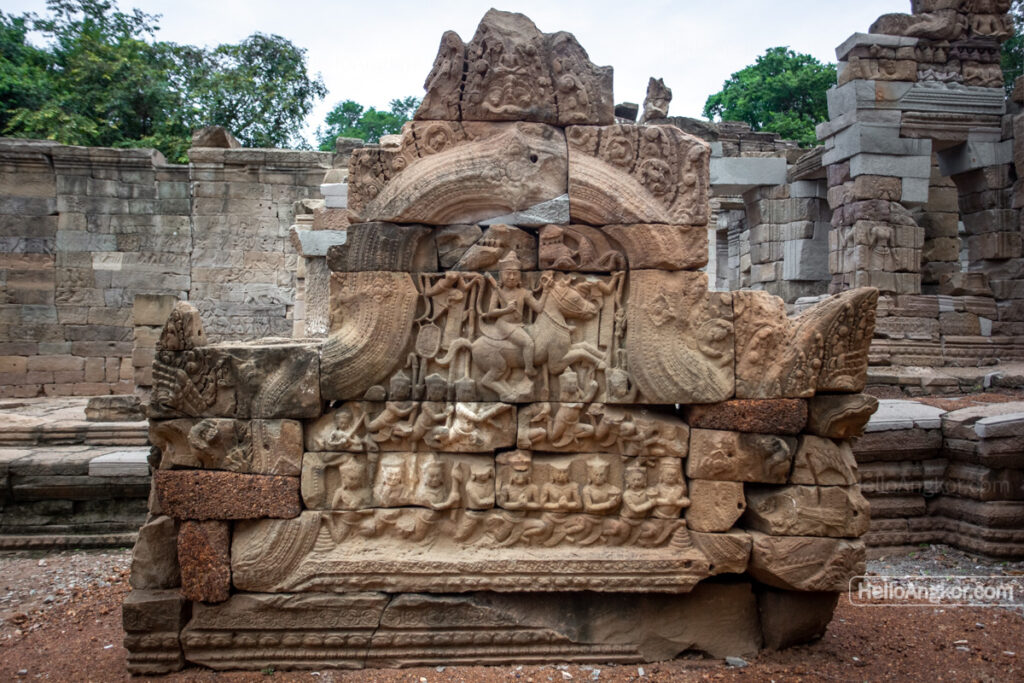
As noted the western wall, featuring the famed eight life-sized depictions of Avalokiteshvara, a pivotal idol during Jayavarman VIIs reign, and the west section of the north wall have recently been restored. The eastern section of the north wall is partially standing. The north section of the eastern gallery wall is mostly unrestored while the south section was restored some time ago. Both sections of the south gallery wall are standing in part. You could quite easily spend weeks studying or even years, as many researchers have, studying the reliefs and decoding the narratives and insight they collectively hold.
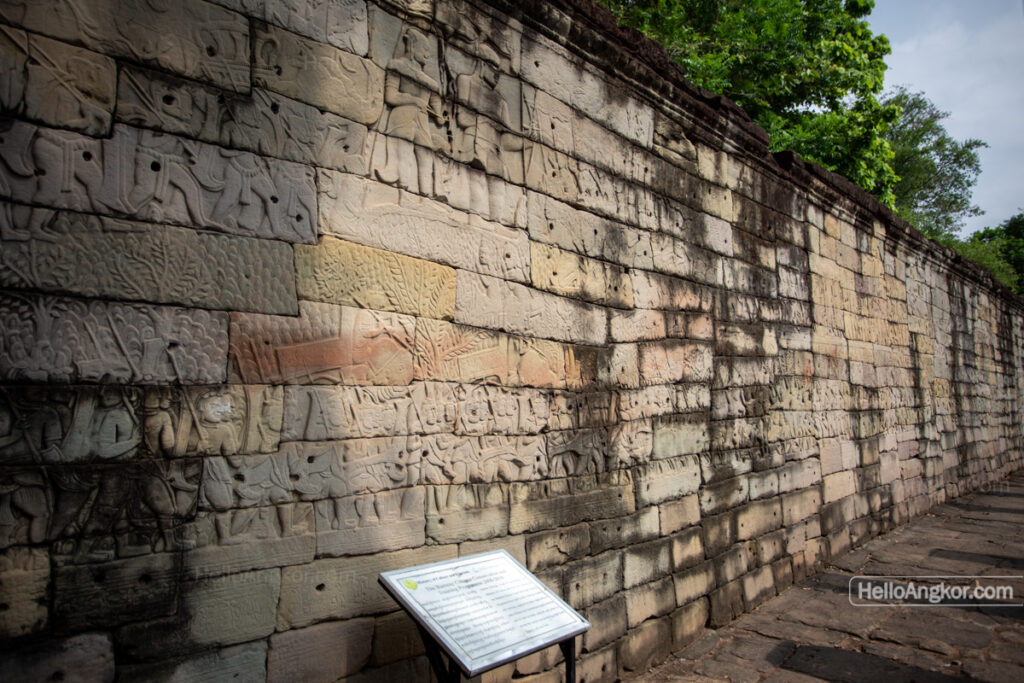
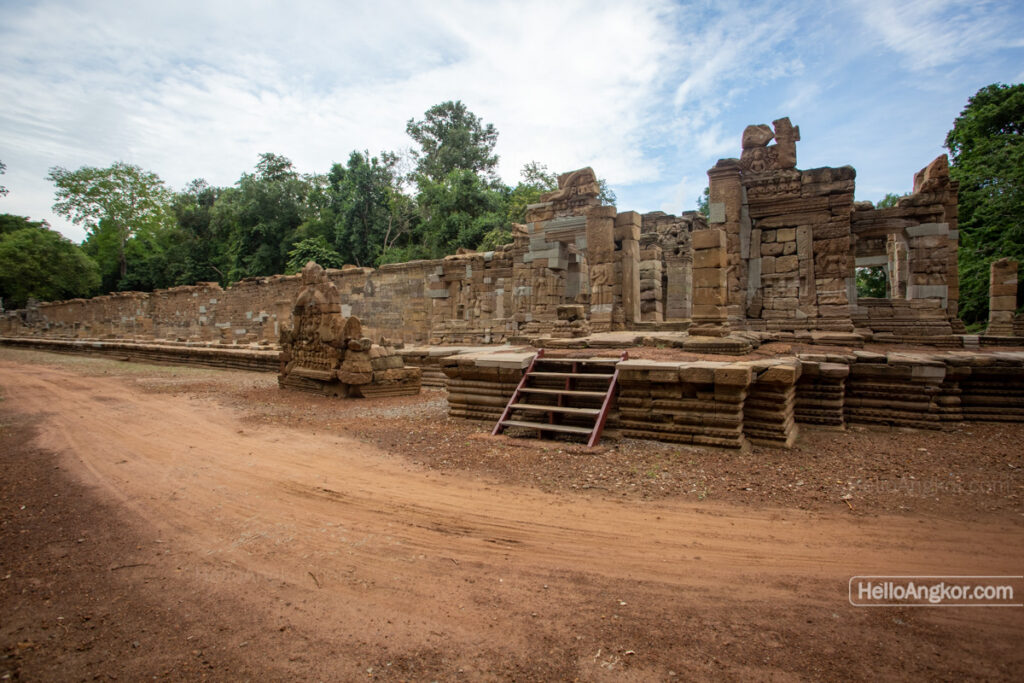
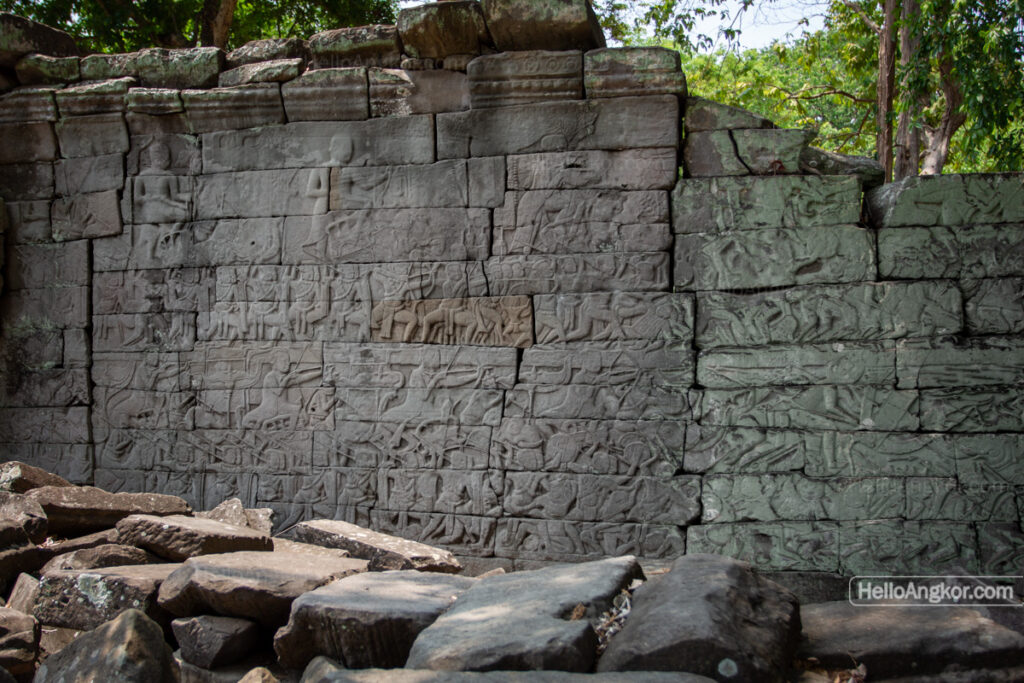
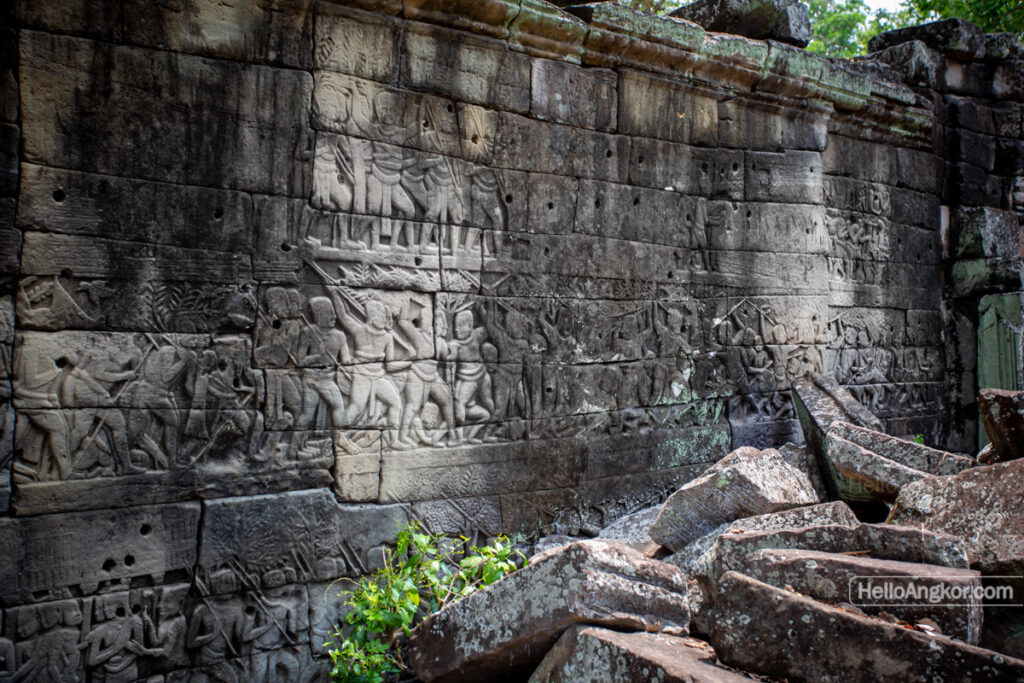

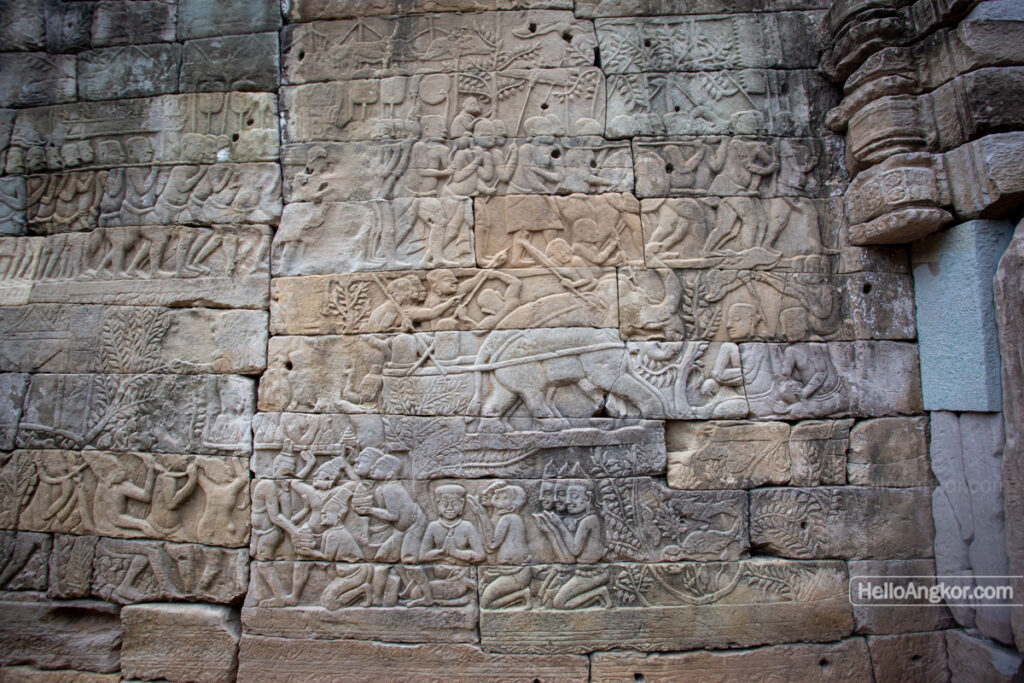

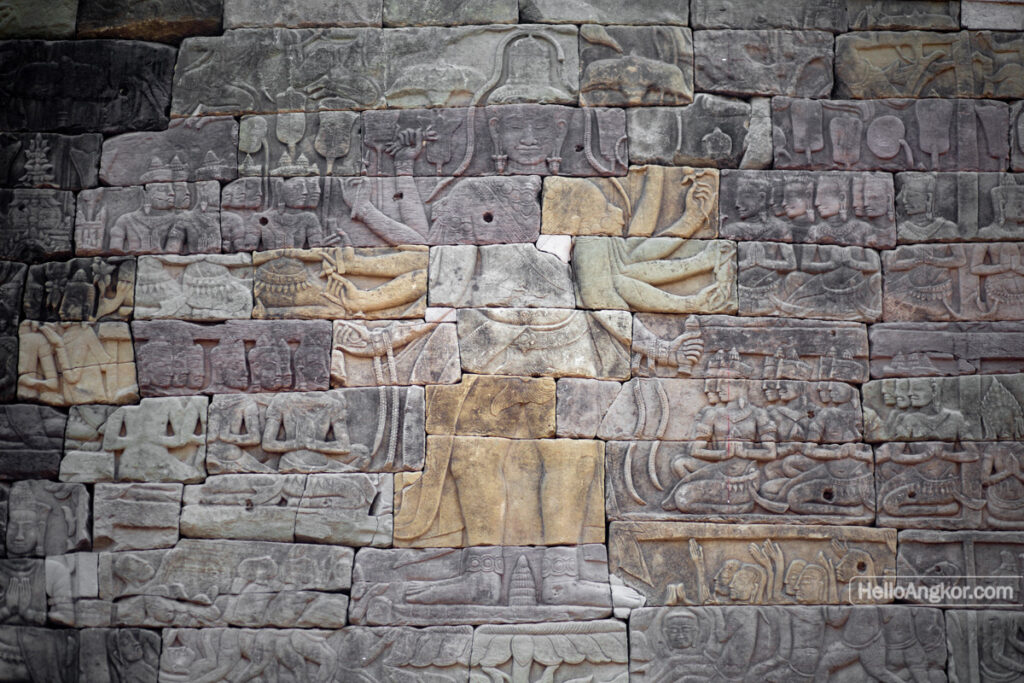
Entering the enclosure, you are fronted with the remains of “Hall of Dancers” where numerous reliefs and narrated pediments can be seen. Flanking either side out further are two satellite buildings where standing lions line the basement while out further again are two basins. Flowing the path here you are presented with numerous highlights, some of which are pictured below.
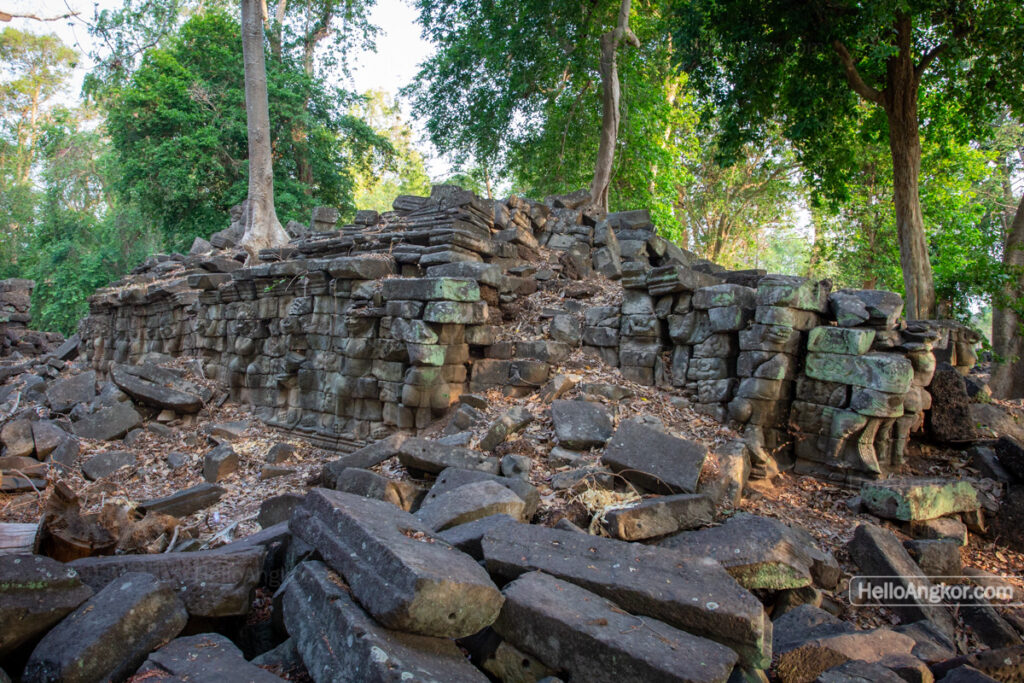

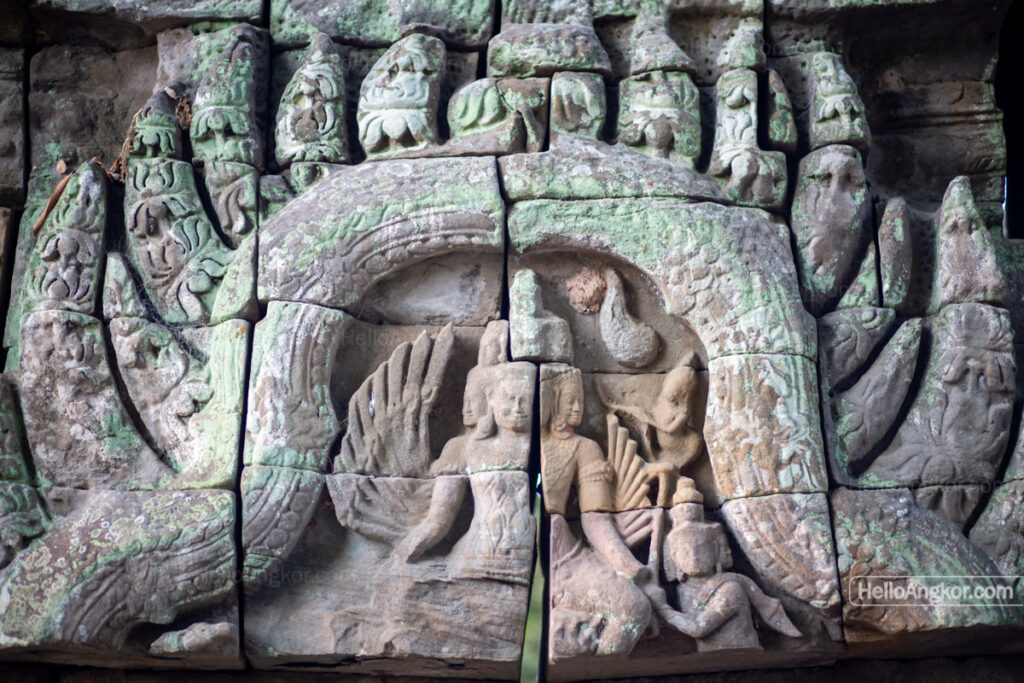
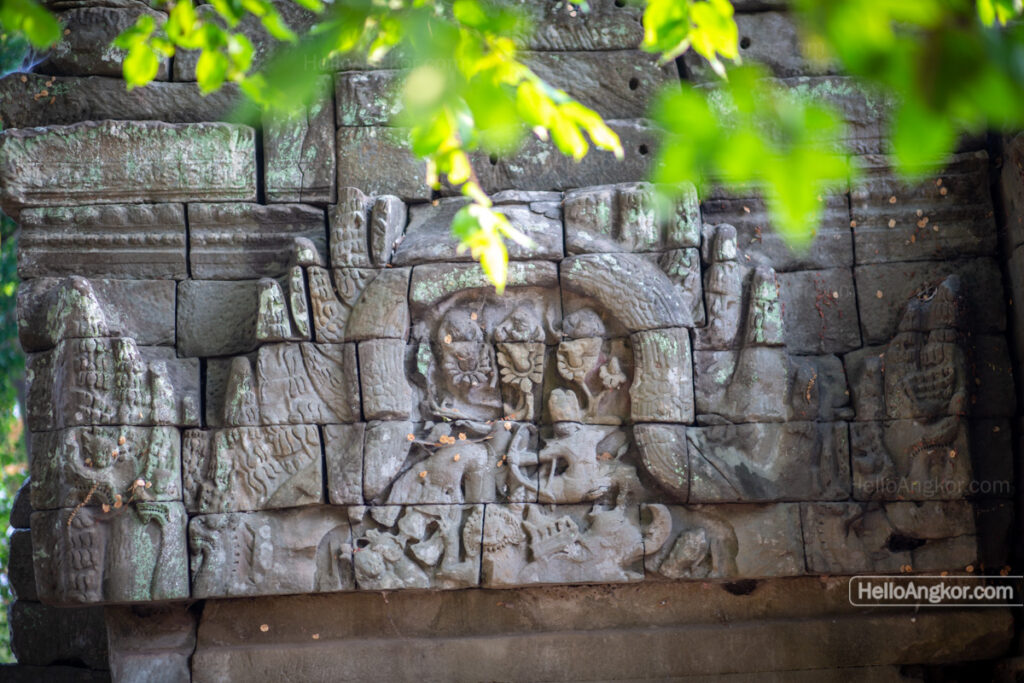
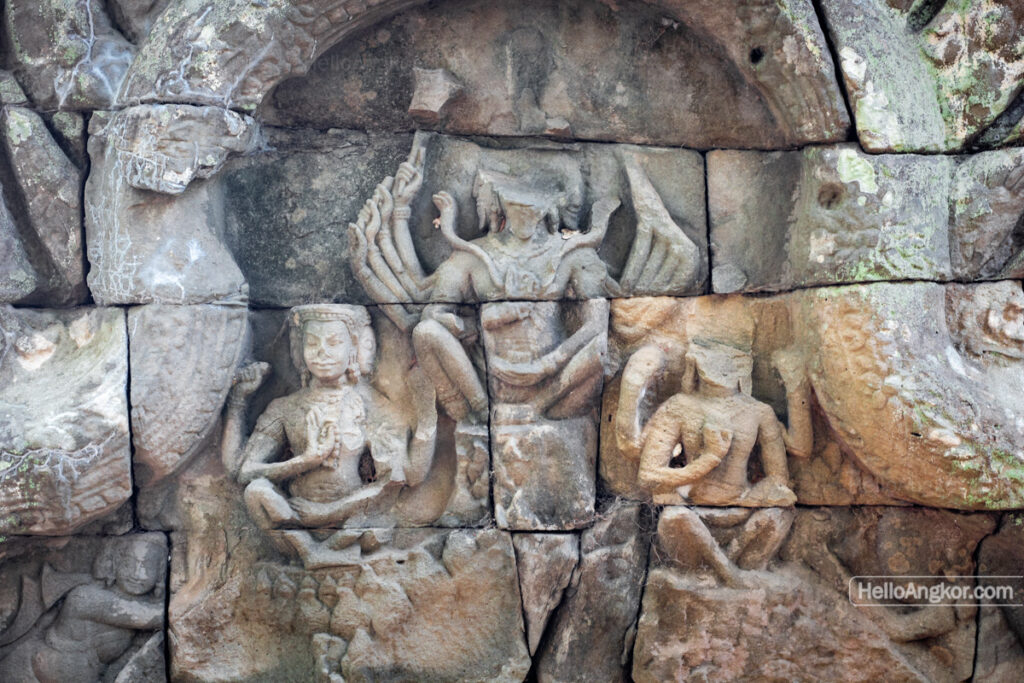
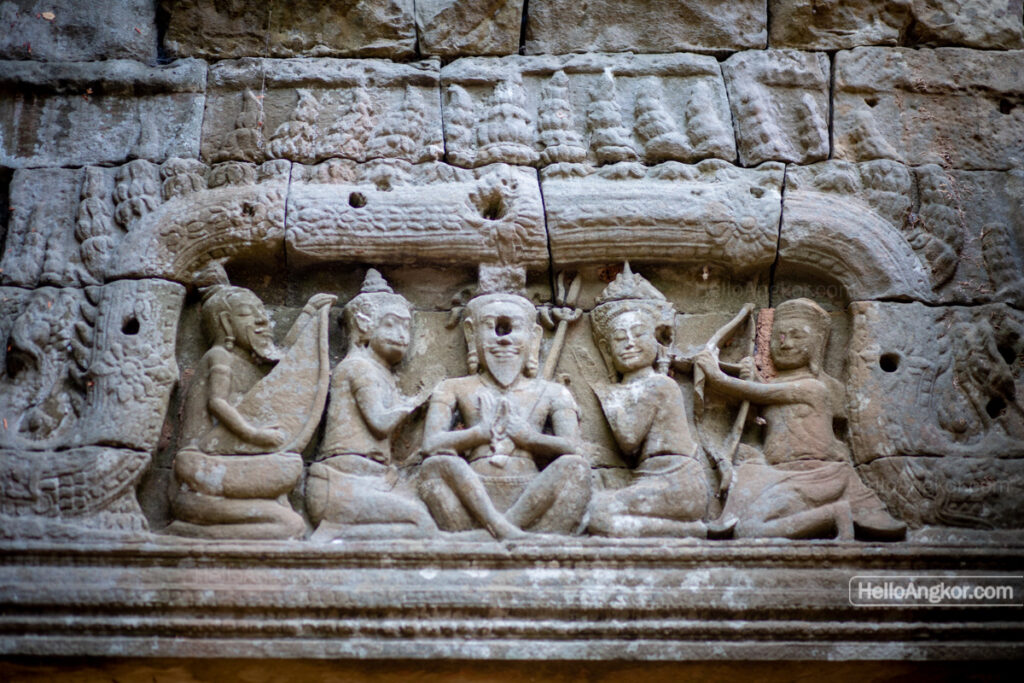
Entering the next enclosure, of about 132m x 118m, it features a series of shrines in cloisters along its east-west axis which is flanked by two satellite enclosures built into the enclosing wall on the north and south. The pivotal shrine and central sanctuaries sit on an offset north south axis that aligns with the aforementioned satellite enclosures all the way to the outermost gopura. Exiting this enclosure, there is a final independent enclosure, fascinating for housing what is heralded as one being a pyramidal shrine, but mostly in ruin.
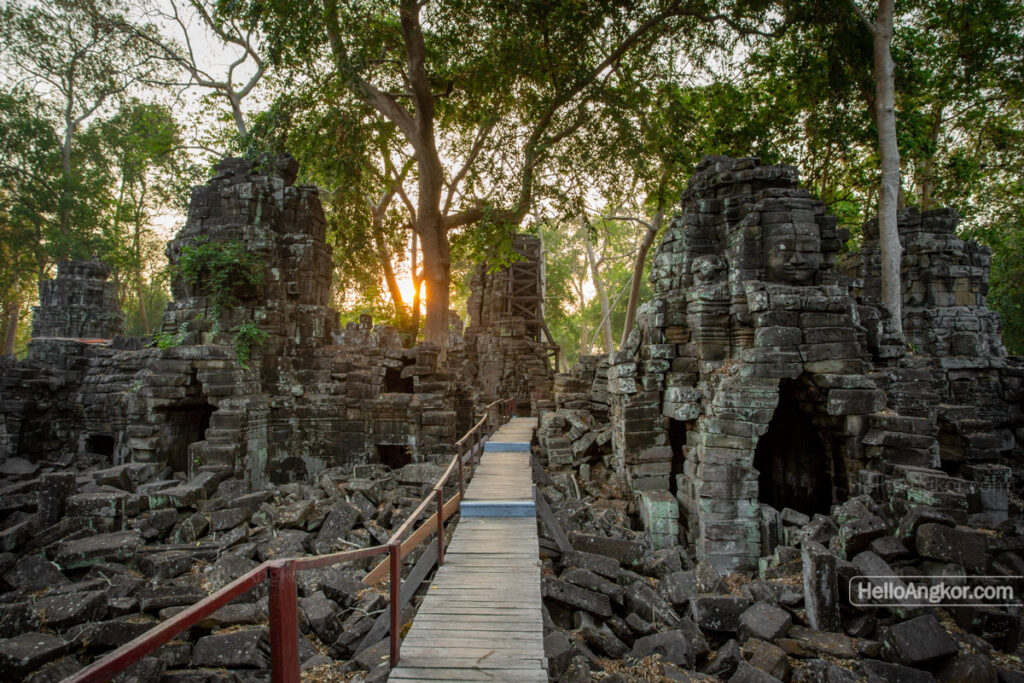
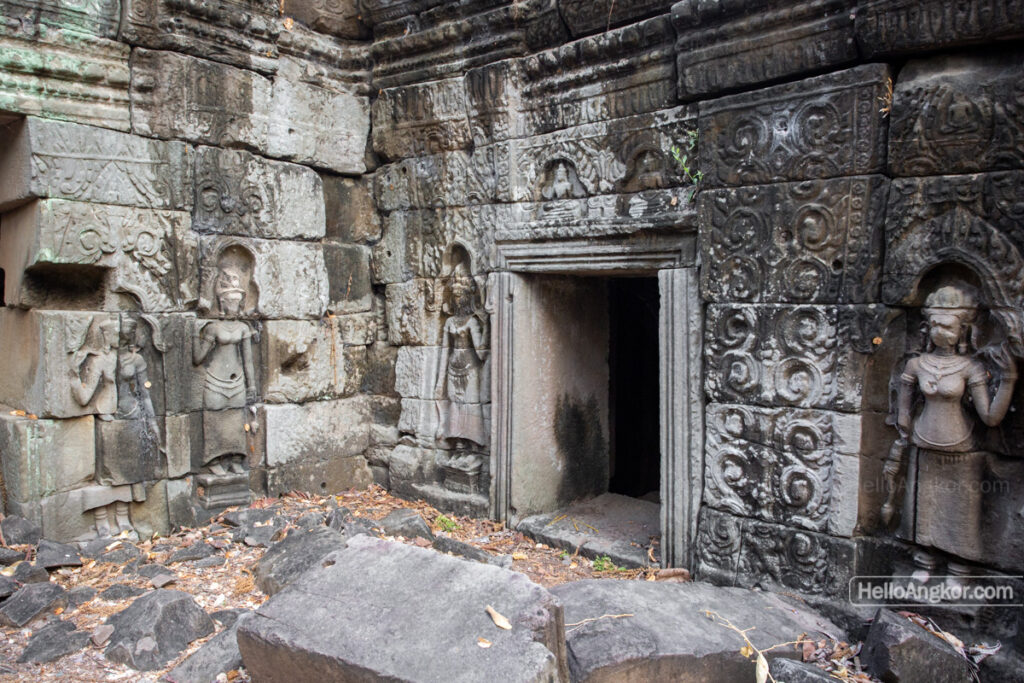
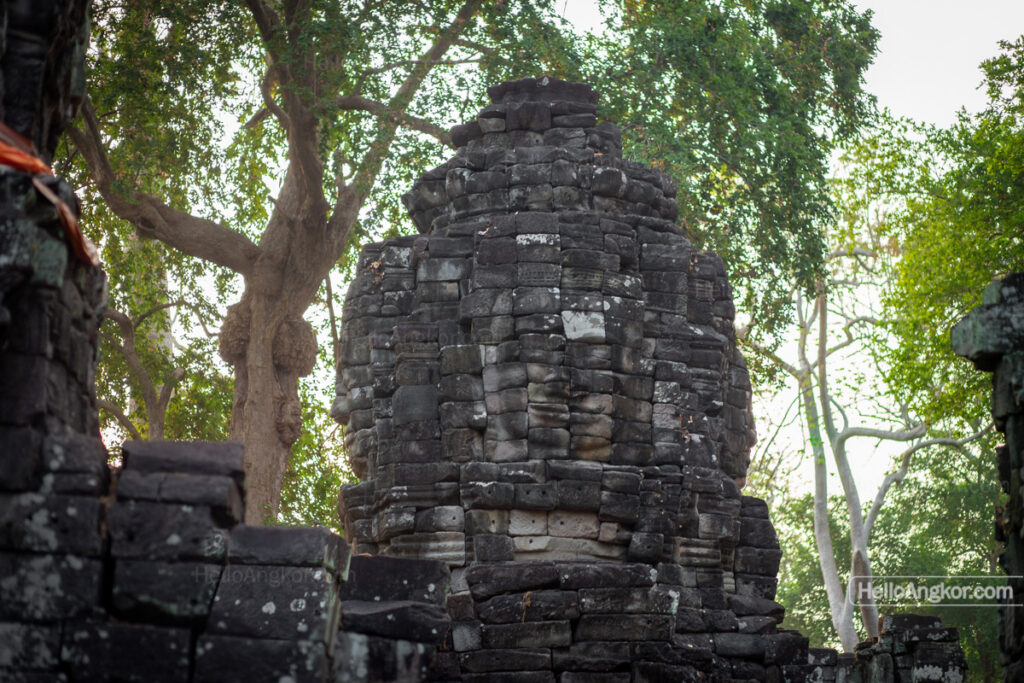


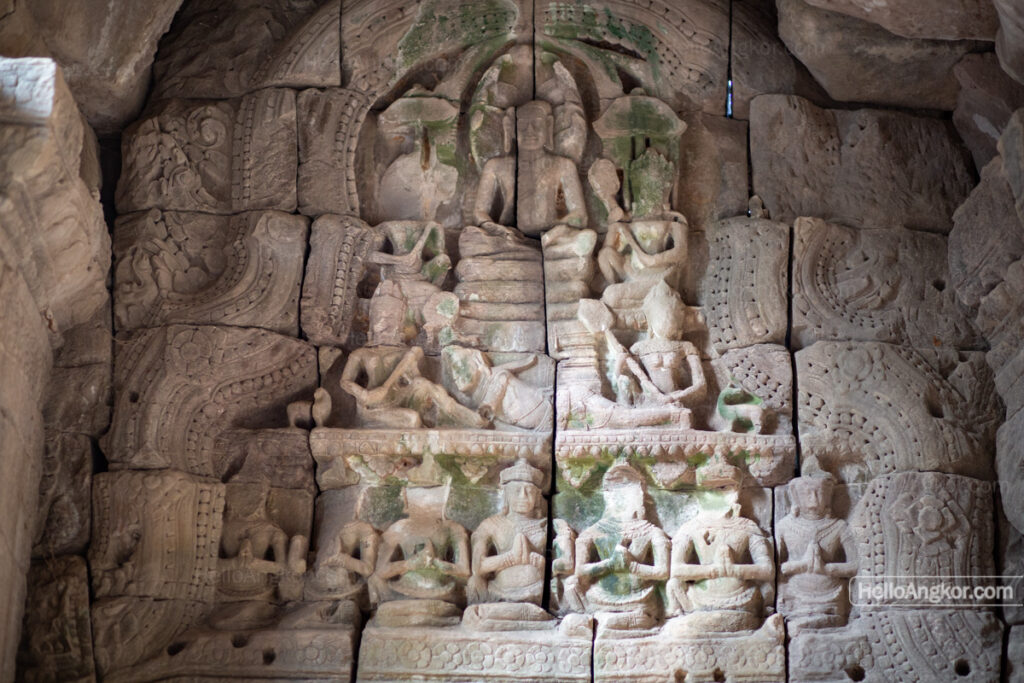

Visiting Banteay Chhmar
The entrance fee to Banteay Chhmar Temple is $5 USD and is payable at the eastern entry after the bridge where you see a small gatehouse. This fee also covers the satellite temples and it opens at 7.30 AM. Considering the need to buy the ticket here before visiting the satellite temples, most will continue on and around the main temple and then make their way around the outer satellite temples.
Timewise, you can easily spend 2 hours exploring Banteay Chhmar Temple and add another 3-4 hours for the satellite temples and Mebon.
We have made four visits to Banteay Chhmar so far between 2021 and 2024, and it offers something new, something that wasn’t noticed on the last visit, every time. That’s irrespective of the restorations offering greater access to more of the site. Every time I leave there, I am already thinking about when I can return. So, when I say you can spend several hours here, you can just as easily spend several days exploring the area, at a slower pace.
Getting there – The temple is accessed by sealed roads that are in good condition and it takes around 3 hours to reach here from Siem Reap via Sisophon, alternatively, you can come via Samroang and the roads are also sealed and in good condition. Both Sisophon and Samroang offer greater accommodation options too.
Local Guides – For tour and local area guides contact Banteay Chhmar CBT.
Accommodation – Considering the distances and time to get around all the sights, you’ll likely want to stay at least one night. Banteay Chhmar CBT offers camping packages, otherwise try Banteay Chhmar Guest House which offers simple and clean rooms in a quiet area for $8 fan room and $15 AC room.
Food – a short walk from the southeast corner of the moat there is a local market with several stalls selling local Khmer food and outside the east entrance to the temple there are two small BBQ stalls.
Historical Notes
French explorers visited and provided some of the earliest documentation on the site through the late 1800s and into the early 1900s including Faraut, Tissandier, Aymonier, Lajonquiere, Delaporte etc. This description, translated from French, is one of the first and was published in 1875 in L’art khmer
Ponteay Chma. – A vast park is surrounded by a crenellated rectangular enclosure, approximately eight hundred meters on each side, with external ditches seventy meters wide, crossed by four bridges decorated with series of Yacksa, carrying Naga. These bridges lead to four monumental gates surmounted by towers with human faces and flanked by enormous Krouts erected on each side of the entrances.
The building itself is rectangular, almost square, and has a side of two hundred meters. It is surrounded by a gallery with a double exterior colonnade and a wall covered with Brahmanic bas-reliefs.
A terrace, triple decorated with Songs and Nagas, precedes the eastern gate, which is triple and surmounted by towers with human faces.
To the right and left of the east-west alley, and 60 meters apart from each other, stand two massive buildings whose walls are decorated with an uninterrupted series of Krouts in caryatids. Outside these buildings are large saras with sandstone steps. The space which separates them is occupied by a system of galleries with triple colonnades, crossed, forming twelve small interior courtyards very ornate, with pilasters garnished with niches, containing marvelously sculpted Thephavadas.These courtyards are limited to the west by a rectangular gallery concentric with the first but elongated in the east-west direction: this gallery contains a set of constructions (galleries with walls pierced with windows, galleries with colonnades, separate buildings), part of which is destroyed and which form around thirty small courtyards also decorated.
Fifty towers of varied shapes and clever architectural layout rise above the intersections of the galleries. A taller tower with human faces occupies the central point.
Leaving this complex through the western door, we find ourselves in a large courtyard with four entrances, the center of which is occupied by a three-story pyramid with four staircases decorated with Songs and forming the base of a small sanctuary with four doors. containing a statue of ShakyaMuni (?) This part of the building fell into ruins before being completed.
Along the north and south galleries of the enclosure which encloses the towers, are series of constructions in sandstone and Bienhoa stone; some buildings are pierced with small windows in the shape of loopholes.
Ponteay Chma is surrounded by eight monuments, arranged two by two, parallel to the sides of the large building, to the right and left of the axes, two or three hundred meters outside the ditch. Each of them consists of a gallery ending at each end with a tower. Remains of roads and various debris are found in the surrounding forest.
Ponteay Chma is one of the largest and most remarkable monuments built by the Khmers. The only European who visited it was the explorer Faraut, who continued the archaeological exploration mission of Cambodia.
Inscriptions
Via CIK
- K. 226 – doorjamb – six separate inscriptions of varying length – “Études cambodgiennes, XXXIX: L’épigraphie des monuments de Jayavarman VII.” Coedes 1951, p. 118-119; IC III, p. 70 – a series of inscriptions noting protective deities (Kamraten Jagat)
- K. 227 – doorjamb (not in situ) – 29 lines – Coedes 1929, p. 309 ; “Études cambodgiennes, XXXIX: L’épigraphie des monuments de Jayavarman VII.” Coedes 1951, p. 117 ; RS III, n° 58, p. 119 – noting the Cham uprising in Vijaya, the Khmer army sent to respond, loss of generals during a series of ambushes on their perilous return.
- K. 592 – doorjamb – 2 lines of Khmer – Coedes IC III, p. 70 – listing the name of a protective deity (kamraten jagat) and a noble (kamraten an)
- K. 696 – doorjamb – 3 separate inscriptions – “Études cambodgiennes, XXXIX: L’épigraphie des monuments de Jayavarman VII.” Coedes 1951, p. 117-118 – listing the names (partly legible) of protective deity and nobility
- K. 827 – building k – 6 lines of Khmer – “Études cambodgiennes, XXXIX: L’épigraphie des monuments de Jayavarman VII.” Coedes 1951, p. 119 – listing the names of protective deity and nobility
- K. 828 – labelled graffiti
- K. 1061 – doorjamb – 2 lines of Khmer – unknown
- K. 1062 – doorjamb – 2 lines of Khmer – unknown
Further Reading
There’s an excellent book dedicated to all facets of the temple
- Banteay Chhmar: Garrison-temple of the Khmer Empire – Peter D. Sharrock, Claude Jacques, Olivier Cunin, Thierry Zephir, 2016
Research papers
- The Face Towers at Banteay Chmar – Oliver Cunin, 2005
- Synthesis of Architectural History of Prasat Banteay Chhmar – Oliver Cunin, 2015
- The Hydraulic System of Banteay Chhmar – Damien Evans, 2011
- Large Scale Angkor Style Reliefs – Anja Schäfer, Hubert Mara, Julia Freudenreich et al, 2011
- Smiling Hevajara or Frowning Ravana in Banteay Chhmar’s “Hall with Dancers” – Peter D Sharrock, 2016
- Two internal pediment scenes from Banteay Chhmar – Phillip Scott Ellis Green, 2013
- A New Khmer and Sanskrit Inscription at Banteay Chhmar – Thomas S. Maxwell, 2012
- Non-destructive investigation of sandstone blocks used in the Wat Phu temple in Laos and the Banteay Chhmar temple in Cambodia, Etsuo Uchida et al, 2023
Map
Site Info
- Site Name: Banteay Chhmar (Pr.) Khmer Name: បា្រសាទបន្ទាយឆ្មារ
- Reference ID: HA11391 | Posted: January 18, 2021 | Last Update: January 10th, 2022
- Tags/Group: Banteay Chhmar, nwgc, ra, Temples
- Location: Banteay Meanchey Province > Thma Puok District > Banteay Chhmar Commune > Banteay Chhmar Village
- MoCFA ID: 51
- IK Number: 816
- Inscription Number/s: K. 226, 227, 592, 696, 827, 828, 1061, 1062

